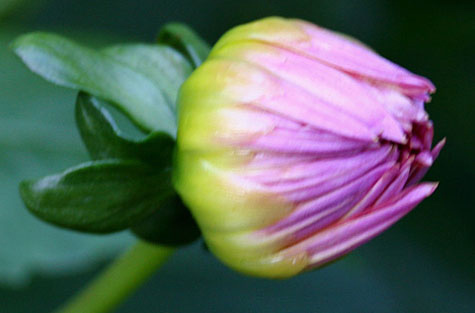
|
While it is still raining M. Halit UMAR |
We experience severe climatic irregularities in Europe. For example, the long period of drought and the highest temperatures ever recorded in Holland were in July 2006 whereas in August so much rain fell, that in some locations the measured amount of the rain by meteorologists was more than the average of a whole year. Such high temperatures followed by very long, extremely humid periods may have an impact on local ecosystems. It is impossible not to ask the reason for such meteorological extremes. It could be a response of Nature to the irresponsible human activities.
On the other hand, these abnormalities need not to be so depressing since the flora and fauna may adapt itself to climatic variations since the adaptation of living organisms to the environment is a well known fact. Morphologists still find enough material to reflect on their intrinsic beauty, either at the macro or microscopical level.
I have been taking photographs of the same or similar objects during July and August. I enjoyed following the process of growth of the flowers in my garden. It was remarkable to see how such tiny and round structures atop a branch could give most intricately decorated flower patterns typical of a particular species. As I observed, they almost always start as a round structure and during the developmental processes called morphogenesis they acquire the final forms, shapes and colours.

Developing flower of a dahlia is about 12 mm in size.

Then, the top of the ball-shaped structure is ruptured and a young flower begins to appear. It is now 35 mm in size.


When the flower is mature, its diameter is around 10 cm. A few days after this elaborate accomplishment, the colours begin to fade and soon follows the decay. The life span is actually too short for these flowers.

A flower of fuchsia plant also starts as a round structure but soon adopts an oval form.

Flower morphogenesis of fuchsia lasts about a week and then beautiful flowers appear at last with distinguished colours and patterns. Unfortunately, these flowers also have a short life span, averaging about a week.


In these pictures we see three obviously different developmental stages of the flowers of this plant. On the right side, a group of rounded primordial flowers are present atop a branch whereas on the left side they are in more advanced stages of the development. Again, they will last only a few days after such a meticulous accomplishment which results in symmetrical patterns and give us the feeling of an aesthetical beauty.

Longer lasting were the flowers of Hortentia. Its flowers actually consisted of many individual flowers, so they make a compound structure. Soon or later comes the moment of bending and colour fading for those individual flowers. At the end the compound flower will be gone by decay.

It is obvious that when organic structures like flowers start to develop, this action will end by decay after a relatively short period of time through the interaction of physical factors and/or biological decomposers such as fungi and parasites. Is it not proper to say: C'est la vie!

Long lasting humidity together with high temperatures may accelerate the development of fungi. We may see many more species of agarical fungi this autumn than the previous years.
Since a few days ago, tiny, round, cream-coloured structures appeared on the most lower part of the stem of a lilac tree in my garden. They grow so rapidly! Long and thin, semi-transparent stipes carry an umbrella-shaped cap which frequently shows the impressions of the lamellae observed from the outside like radiating stripes from the centre to the edge of the cap.
The fungi decompose the surface of the tree stem. We also know that fungi decomposes the inner parts of the stem as well by their mycelia. This tree is in reality parasitised by fungi and may not survive in the long term.
The spores of the fungi will give rise to new generations of their species, and the cycle will continue again and again at the cost of cellulose or chitin containig structures like (fallen)trees and insects.
Touching with a glass slide on the lamellae (gills) of a fungi will reveal enourmous amount of spores. Squeezed caps on the glass will easily deliver hyphal cells and tissues as well. A polarized light, preferably a lower position of the condenser, and small diaphragms will be suitable to study fresh fungal cells and tissues by a light microscope.
Comments to the author are welcomed. M. H. UMAR, MD PhD
Please report any Web problems or offer general comments to the Micscape Editor.
Micscape is the on-line monthly magazine of the Microscopy UK website at Microscopy-UK